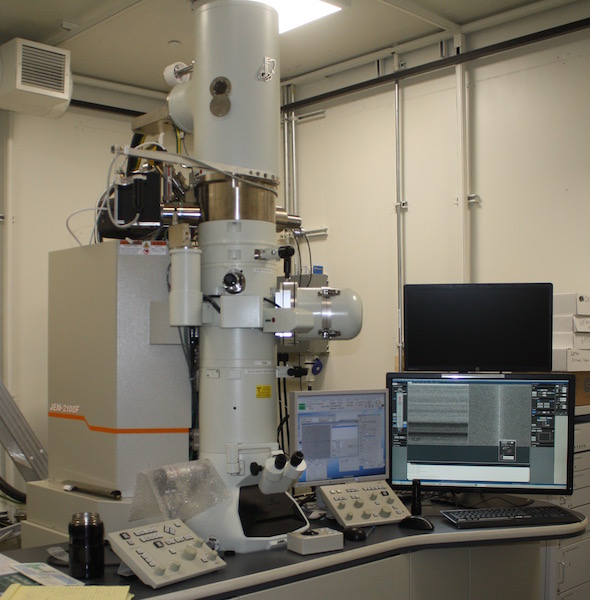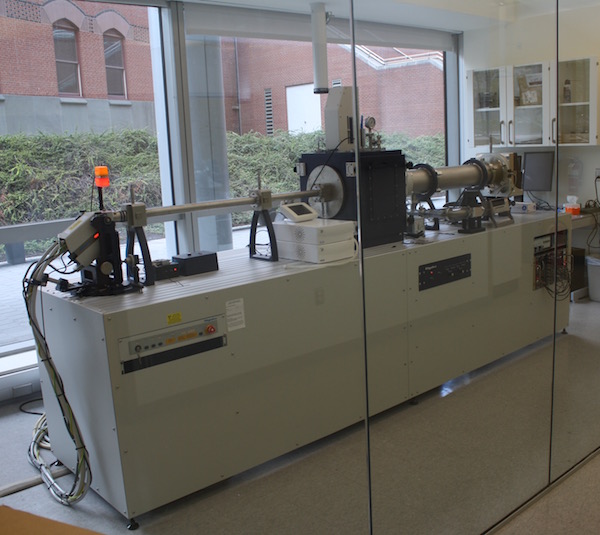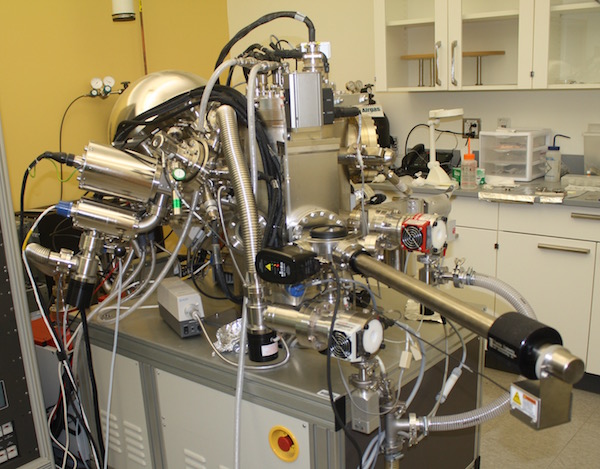Professor Jonathan Spanier of the Department of Materials Science and Engineering also serves as the Director of Drexel University’s Core Facilities, a University entity that houses advanced instrumentation for training, expertise and analysis for use by the University community and academic, industry, and national laboratory partners. The Core Facilities recently completed a major renovation and Professor Spanier shared some insights into the renovation and the role of the Core Facilities in the University and beyond.
What changes have been made to the Core Facilities?
With the financial support of the University, we completed a major laboratory renovation project that will make more efficient use of an underutilized area by converting it and surrounding areas into glass-enclosed lab spaces specifically designed to help showcase the instruments.
What instrumentation capabilities do the Core Facilities have?
This core facility maintains key tools that are critical for imaging and analyzing the structure of materials we make and test, down to the nanoscale. Many use our field-emission electron microscopes, each with elemental analysis, including one with a focused ion beam capability and another with electron backscattering analysis. We have instruments for analyzing atomic- and larger-scale structure of materials using X-rays (X-ray diffractometer and small-angle X-ray scattering) and for analyzing the chemistry and electronic structure of surfaces (X-ray and ultraviolet photoelectron spectroscopy).
What is new in the Core Facilities?

The JEOL JEM2100F transmission electron microscope has a highly coherent field-emission electron source and is capable of very high resolution imaging and analysis. The TEM is also equipped with a large-area X-ray detector for fast chemical analysis, multiple detectors for scanning TEM signals and a one-of-a-kind Gatan Image Filter coupled with a Gatan K2 direct electron detector.
A brand new field-emission transmission electron microscope (TEM)! The new instrument has state-of-the-art capabilities for imaging and analyzing atomic and electronic structure. The JEOL 2200F FE-TEM is housed in a room especially designed and constructed with shielding to reduce noise. This microscope complements our faculty expertise in understanding how materials respond at the atomic scale as they are used in real-world applications, e.g., under heating, flowing liquids, mechanical loading, and electrical bias. The new labs also include a proper fume hood, wet bench and chemical storage, which have not been not part of the Core Facilities in the past, and a small instruments room that hosts sample preparation tools. The renovations also enable the University to accommodate a significant gift-in-kind we secured recently from L-3 Corporation, two 75 mm-scale molecular beam epitaxy (MBE) thin film deposition systems. These tools will significantly expand research capacity for thin film growth at Drexel and its users will also rely on the characterization services in the Facility.
How does the remodeled Core Facilities impact both the University in general and Drexel Materials in particular?
The improvements will enhance the quality of on-campus academic, graduate and professional training, and accelerate progress in research, discovery and innovation. Visiting prospective graduate and undergraduate students, faculty and postdoctoral candidates will appreciate the access to important research capabilities, aiding our recruitment efforts. The new labs will provide a safer and more pleasant working environment for our users and staff. The layout, specifically the interior glass-walled design, will help us convey to visitors and our campus community what we do and who we serve each day.

The Small-Angle X-ray Scattering (SAXS) System Rigaku S-MAX 3000 provides information about particle size distribution, orientation, shape and size of ordered materials with d-spacing ranging from 30 to 100nm. SAXS setup is complimented with a Wide Angle X-Ray Scattering (WAXS) feature that allows for the analysis of long-range periodicity of materials with d spacing 0.1-1nm. It is optionally equipped with Linkam High Temperature Control stage, providing temperature control from -50 to 300oC.
Can you talk more specifically about how Drexel Materials and the Core Facilities are interlinked and how Drexel Materials students and faculty play a role in the Core Facilities?
The Core Facilities has grown from a small Department of Materials Science and Engineering lab located in Curtis Hall and consisting of a few instruments to the far more expansive facility it is today. The original facility included a scanning electron microscope and a metallograph. Relocating to the Bossone Research Enterprise Center in 2005, the Core Facilities expanded its staff to serve more than 200 users from five Drexel colleges and schools, and from small and large companies, and federal government labs. Students, postdocs and faculty from Drexel Materials rely on the Core Facilities and its professional staff each day for new user and advanced trainings and access to and maintenance of instrumentation in support of their research. The expertise that our students and postdoctoral users develop in the Core Facilities during their time at Drexel enables them to secure highly competitive positions after graduation or their appointments here.
What is the user base of the Core Facilities?
During this past year, the Facility has about 200 users with more than 11,000 logged usage events.
How is the Core Facilities involved in outreach?

X-Ray Photoelectron Spectroscopy (XPS) PHI 5000 surface sensitive analysis technique of approximately first 10 nm of the surface. Provides elemental as well as chemical composition for all elements except H and He based on the Binding Energy of core electrons. Equipped with Al Klapha Monochromatic Source, Ar+ ion gun, C60 ion gun, hot/cold stage and hemispherical analyzer with 16 channel detector. XPS is also upgraded with optional UPS (Ultra-Violet Electron Spectroscopy) capable for measuring work function and Fermi level of the materials.
The Core Facilities and its student and faculty users and staff host the next generation of scientists and engineers, students visiting from area elementary, middle and high schools. In the past year we have co-hosted the Drexel ASME Chapter’s STEM Diversity & Discovery Day in partnership with the Community College of Philadelphia. The Core Facilities also participates annually in Philly Materials Science and Engineering Day and supports the ASM International Materials Camp, a summer experience for high school students to get excited about the discipline of materials science and engineering.
What external organizations benefit from the Core Facilities?
We have a number of external users who benefit from the Core Facilities and its resources and expertise, including students and postdoctoral researchers from other academic institutions, scientists and engineers from companies and from government research laboratories. For example, within the last year we have been building new relationships with the US Mint, the US Department of Agriculture, the Federal Aviation Administration’s William J Hughes Technical Center in NJ and several companies.
Is there anything else you want to add that you feel would be useful for friends and colleagues of Drexel Materials to know about the Core Facilities?
I would like to thank the staff of the Core Facilities for their dedication and our users for their patience through this period of transition while instruments have been relocated. I would also like to acknowledge Wayne Hill, Project Coordinator for the Vice Provost and Executive Director of Technical Operations and Assistant Dean for the College of Engineering. Wayne has led Drexel in managing all aspects of the renovation project, from the planning and design, schedule, review, construction and instrument relocation, and the renovations would not have been possible without his experienced leadership.